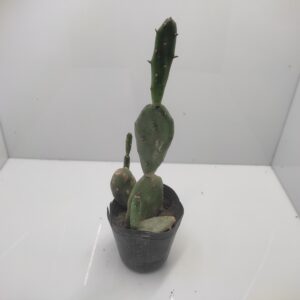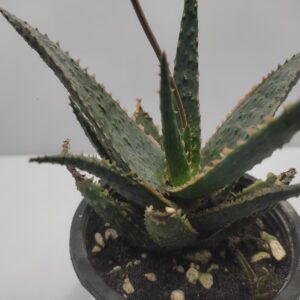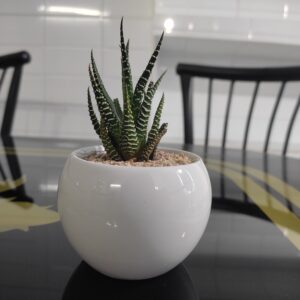Morphology:
- Shape and Size: Gymnocalycium mihanovichi typically has a globular to cylindrical shape, reaching a height of about 10 to 5 cm (4 to 6 inches) and a diameter of approximately 5 to 10 cm (2 to 4 inches). The plant can sometimes grow larger under optimal conditions.
- Ribs: The cactus features prominent ribs, usually numbering between 5 to 10, which are well-defined and give the plant a distinctive appearance. The ribs are often slightly tuberculate, adding texture to the surface.
- Color: The skin of the cactus is usually a vibrant green, but it can also exhibit shades of blue-green or gray-green, depending on environmental conditions and specific cultivars.
Spines:
- Gymnocalycium mihanovichi is characterized by its spines, which can vary in color from white to yellow or even reddish. The spines are typically short and can be either straight or slightly curved. They are arranged in clusters, with a central spine that is usually more prominent than the others.
Flowers:
- One of the most attractive features of Gymnocalycium mihanovichi is its flowers. The blooms are funnel-shaped, typically appearing in late spring to early summer. They can be white, pink, or red, often with a contrasting darker center. The flowers can reach up to 5 cm (2 inches) in diameter and are known for their beauty, making this cactus a popular choice among collectors and enthusiasts.
Fruit:
- After flowering, the cactus produces small, fleshy fruits that are usually red or purple when ripe. These fruits contain seeds that can be harvested for propagation.
Habitat and Cultivation:
Natural Habitat:
- In its native habitat, Gymnocalycium mihanovichi grows in rocky, well-drained soils, often in areas with partial shade provided by larger plants. It is adapted to a warm climate and can tolerate drought conditions.
Cultivation:
- Gymnocalycium mihanovichi is relatively easy to cultivate and is popular in gardens and as a houseplant. It prefers bright, indirect sunlight and should be protected from intense afternoon sun to prevent sunburn. The cactus thrives in well-draining soil, such as a cactus mix or a blend of potting soil with sand and perlite.




Reviews
There are no reviews yet.